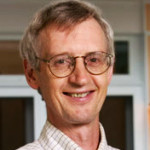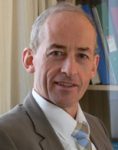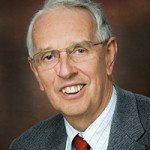How did Maharishi discover TM?
The generally accepted wisdom about meditation was that it was a way for the mind to come to inner silence, and that this was achieved by forcing the mind to rest, usually through a form of concentration on a word, a sound, or a visual point, or through visualisation techniques. The mind soon gets bored with this and will want to go somewhere else, but we will tell it: “no, stay here, stay focused”.
At some point the mind will grow so tired from all the effort from that concentration, that it will check out. At that point one may (possibly) find deeper experiences, although usually the mind is so tired that the experiences will hardly ever be very clear.
This process requires a lot of effort and discipline, and the general wisdom therefore is that only monks that can afford to spend many hours each day on meditation, could ever hope to get such “higher” experiences. This was how a point was reached where an experience that was described on many occasions throughout time in the most incredible terms, actually turned out to have very little practical use in every day life, as it was so difficult to achieve that experience.
But at a certain time in 1955 someone arrived from the Himalaya’s in India with a wholly different interpretation of meditation. This was a young scientist who, after his studies in Western science, had spent 13 years with one of the most important Vedic teachers of his time, and had learned what meditation should actually be like.
 From these studies with his master and from his own experiences, the young student learned that the mind should not be forced to come to inner silence. It is the most pleasant experience available for the spirit, the ability to come “home”, and discover its own infinite power.
From these studies with his master and from his own experiences, the young student learned that the mind should not be forced to come to inner silence. It is the most pleasant experience available for the spirit, the ability to come “home”, and discover its own infinite power.
From its own nature the mind is drawn to a feeling of happiness. Wherever we look for happiness, in a relationship, a bigger house or a better position at work, the ultimate driver for all that we do is to be happy. The mind’s true nature, its home, is a reality of pure happiness, and the mind will therefore automatically want to go there, whenever it gets the chance. To force the mind to go there is counter-productive. The only way to experience this inner reality efficiently, is when this process comes naturally. We merely need to point the mind in the right direction, and can then let it do its thing.
This natural process is what the young scientist structured into a technique that he called “Transcendental Meditation”. To transcend literally means to “surpass”. It’s a process of surpassing the finest level of thought into a state of a total silence. He obtained the technique from his master and it was thanks to his (western) scientific mindset that he was able to analyse and structure it in a manner that allowed it to be taught as a technique that anyone can practice at home. Nevertheless he always insisted for the technique to be taught in the name of his master, and not in his own.
The young student later was awarded the title “Maharishi”, which means “great visionary” in Sanskrit. His Holiness Maharishi Mahesh Yogi was his full title.
 Maharishi’s biggest contribution only came later, once he succeeded in not just structuring the technique, but also in structuring the teachers’ education to enable them to teach the Transcendental Meditation technique correctly. The only reason why this natural technique was lost, was the lack of available teachers who knew how to teach real meditation. History showed that it was difficult to teach the technique perfectly so that the practice was fully natural and effortless, otherwise the technique would have never been lost. The natural experience is very subtle and personal, and requires a careful guidance of a teacher with the requisite experience (and this is why TM cannot be learned from a book). The education to become a Transcendental Meditation teacher requires a full-time course of almost 6 months. Maharishi has taught more than 40.000 TM teachers around the world. This education has proven successful, as evidenced by all the research and the experiences of more than 6 million people that have already learned the technique. The TM technique is easy to learn, pleasant to practice and immediately affects on all areas of life, because it goes to the source of all life. This is what real meditation should be like, much more than just relaxation. It should be returning to oneself, and discovering one’s true nature.
Maharishi’s biggest contribution only came later, once he succeeded in not just structuring the technique, but also in structuring the teachers’ education to enable them to teach the Transcendental Meditation technique correctly. The only reason why this natural technique was lost, was the lack of available teachers who knew how to teach real meditation. History showed that it was difficult to teach the technique perfectly so that the practice was fully natural and effortless, otherwise the technique would have never been lost. The natural experience is very subtle and personal, and requires a careful guidance of a teacher with the requisite experience (and this is why TM cannot be learned from a book). The education to become a Transcendental Meditation teacher requires a full-time course of almost 6 months. Maharishi has taught more than 40.000 TM teachers around the world. This education has proven successful, as evidenced by all the research and the experiences of more than 6 million people that have already learned the technique. The TM technique is easy to learn, pleasant to practice and immediately affects on all areas of life, because it goes to the source of all life. This is what real meditation should be like, much more than just relaxation. It should be returning to oneself, and discovering one’s true nature.
Over the past 50 years Maharishi has revived numerous other methods from the Vedic scriptures (one of the oldest traditions in the world) to bring us back in touch with ourselves, and has brought this to the attention of the world, such as Ayur-veda.
In 2000 he established a global organisation to make this knowledge and the technique more available. The Global Country of World peace is a not-for-profit organisation with the objective to better the world. The leader of this organisation, and Maharishi’s successor, is Maharaja Adhiraj Rajaraam. A scientist who discovered the relationship between the structure of the Vedic Texts and the structure of the human body.
In this old video of a programme on Canadian National Television, Maharishi explains in more detail what exactly TM is.
Some Successful TM practitioners
 Hugh Jackman
Hugh Jackman
 Oprah Winfrey
Oprah Winfrey
 David Lynch
David Lynch
 Paul McCartney
Paul McCartney
 Clint Eastwood
Clint Eastwood
 William Hague
William Hague
 Katy Perry
Katy Perry
 George Lucas
George Lucas
 Jerry Seinfeld
Jerry Seinfeld
 Moby
Moby
 Gwyneth Paltrow
Gwyneth Paltrow
 Martin Scorcese
Martin Scorcese
 Ellen Degeneres
Ellen Degeneres
 Rupert Murdoch
Rupert Murdoch
 Dr. Oz
Dr. Oz
 Dilma Rousseff
Dilma Rousseff
What people are saying

“Transcendental Meditation has opened up a new world of good health and well-being for me. I am so much more in control of my life and realise that there is something I can do to reduce my stress levels and feel more relaxed. It is such a blessing — I am grateful to have found it.”
Aisling Drury-Byrne, Royal Irish Academy of Music, Musician & Teacher

“The best thing I ever did in my life was to learn TM as an architectural student in 1973. I have benefitted in a multitude of ways from it’s simple, easy practice. In the morning, when I sit down to practise TM, it’s as if I receive a mental bath. Having more energy and clarity as a result of my TM practice, I am able to give and receive more, not only in my professional life, but in my personal life also.”
Peter Mullins, Architect

“As a musician, I feel that it helps me to perform better and as a teacher, it allows me to approach the classroom in a relaxed state of mind which, I believe, in turn has a positive effect on my students. I would highly recommend TM to anyone who is looking for an easy and effective way to bring balance into all aspects of their lives.”
Rachel Robinson, Musician & Teacher

“I encourage all my patients to practice Transcendental Meditation. Experience Shows and research confirms, that it is the best vaccine against stress-related conditions. Regular practice keeps you inwardly settled despite being surrounded by chaos.”
Dr Donn Brennan (MRCGP), General Practitioner.

“Having practised TM and the TM Sidhi Programme for 27 years I find it hard to describe the magnitude of change it has brought to my life other than to say it has changed everything ; in a phrase perhaps it has made me a completely happy and enriched person enjoying all aspects of life.”
Derek Crampton, Businessman
Learn Transcendental Meditation in Westport
Westport Family and Community Resource Centre, Fairgreen, Westport, Co. Mayo Click here for map
Free TM Intro Talks
The Lectures are free. Please register below.
Westport TM Center
Westport Family and Community Resource Centre, Fairgreen, Westport, Co. Mayo







